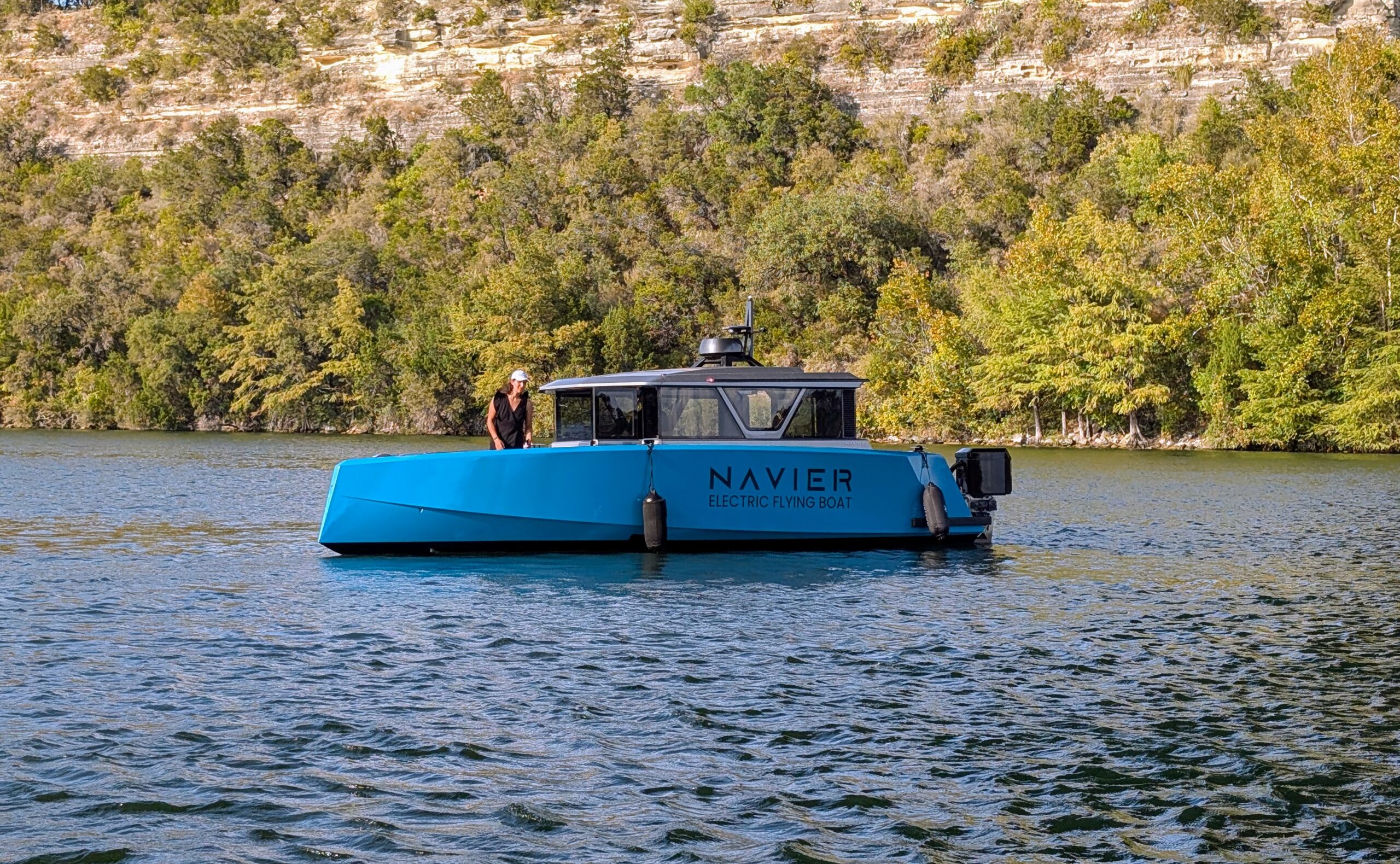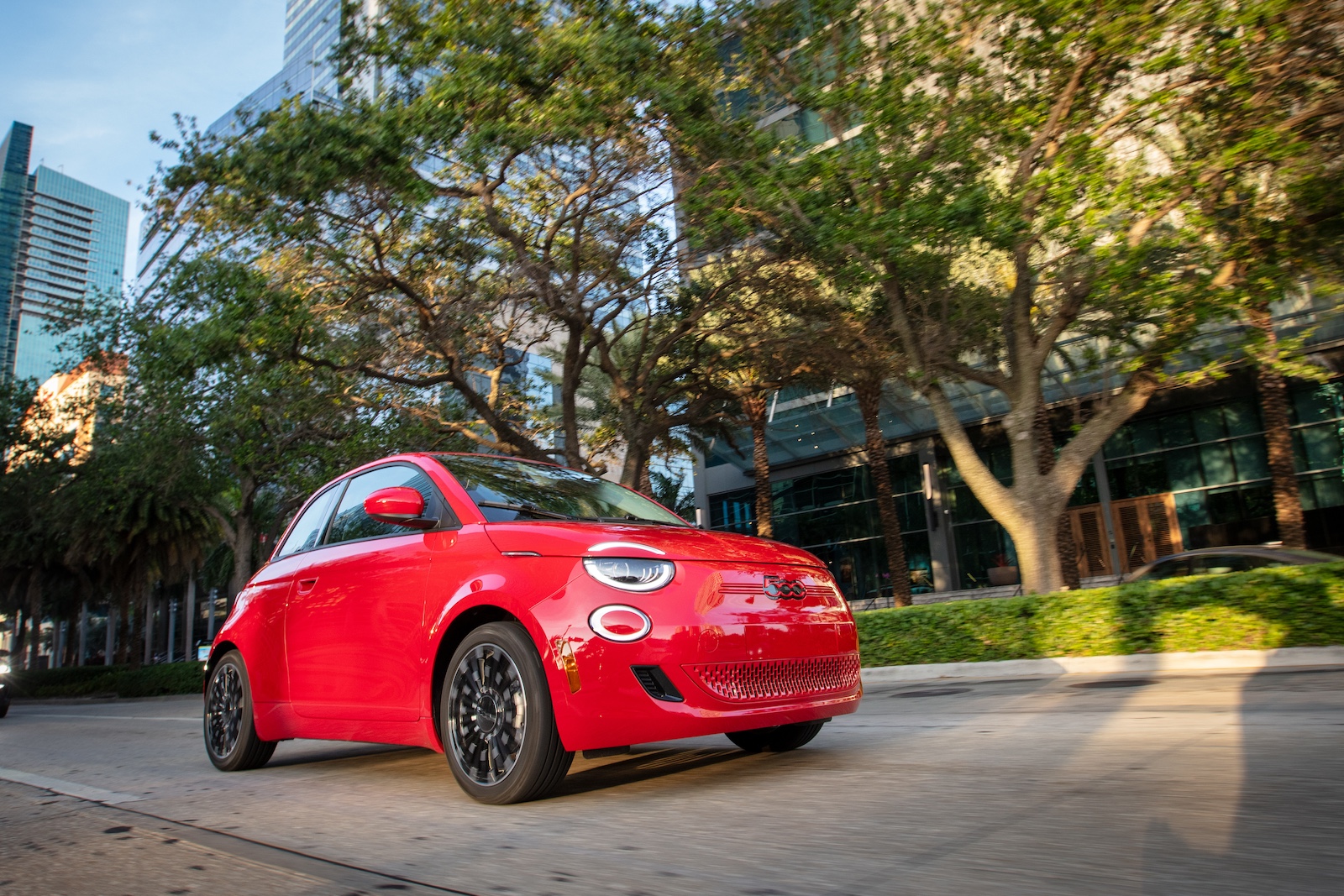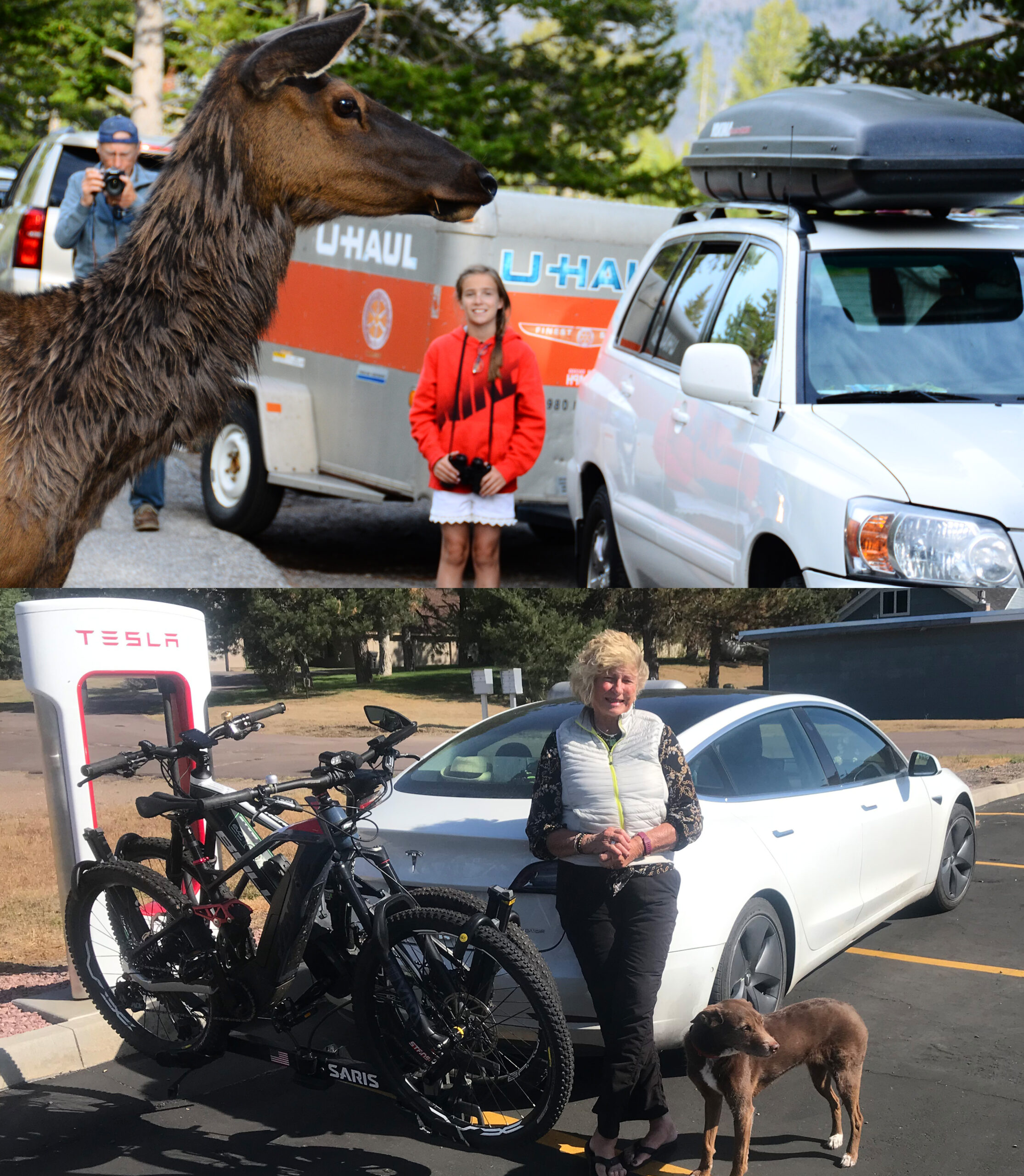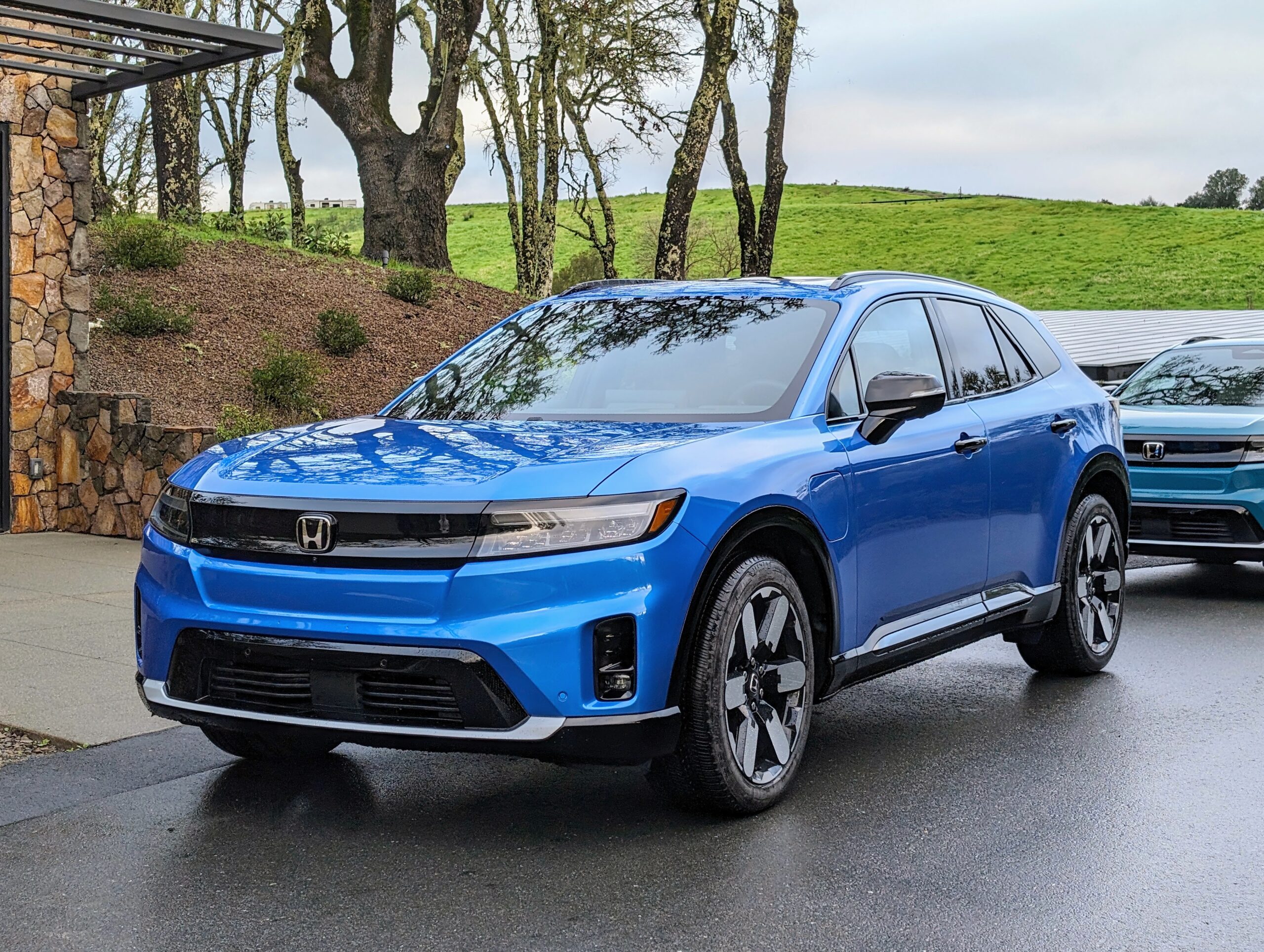Sign up for daily news updates from CleanTechnica on email. Or follow us on Google News!
6,000 miles, 10 days, 44 Superchargers, 1 Happy Dog
After over five years and 60,000 miles driving a Tesla Model 3, I’ve done plenty of road trips: from New York City to New Hampshire, upstate NY, Buffalo, even Georgia. Driving up and down the east coast in a Tesla is not complicated: follow the built-in navigation system from supercharger to supercharger and let the car do the driving (well, mostly).
I’ve always wanted to see more of this great big beautiful country of ours and the opportunity to do so presented itself late last year. My mom and her Black Labrador Mollie needed to get out to Washington State to my sister’s place for the winter. Big dogs aren’t welcome on planes, trains, or buses, so the options were either to drive or to pay an exorbitant fee and trust a pet moving company with our precious cargo. Since I have free supercharging thanks to the Tesla referral program, and a flexible work schedule, I decided it was a good time to pack up some snacks, put some air in the tires, queue up some podcasts, and hit the road in my Model 3.
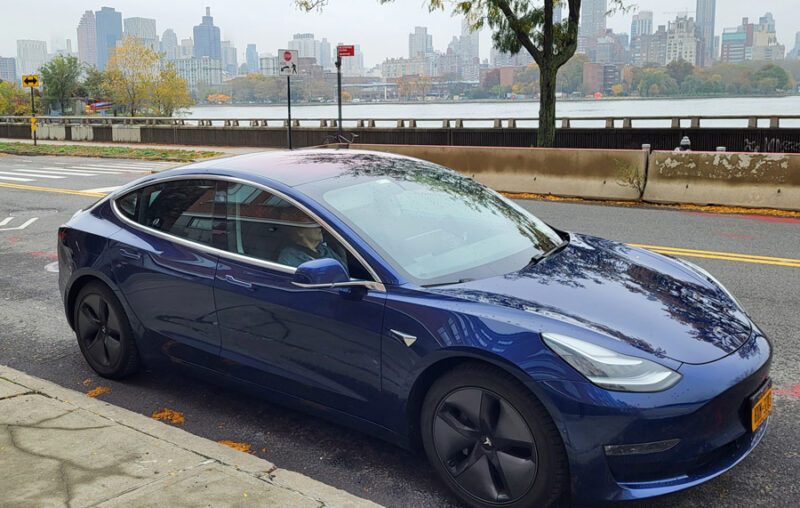
Seattle, Washington or Bust
We started in New York City on a Monday afternoon, and followed a northerly route in order to visit my kids in college along the way. I relied on the Tesla navigation to plot our route through Tesla Superchargers and it did so nearly perfectly (I’ll get to that soon). We’d arrive at each charger with somewhere between 5% and 20% charge left, charge up to 80% or 90% and get moving again. Simple!
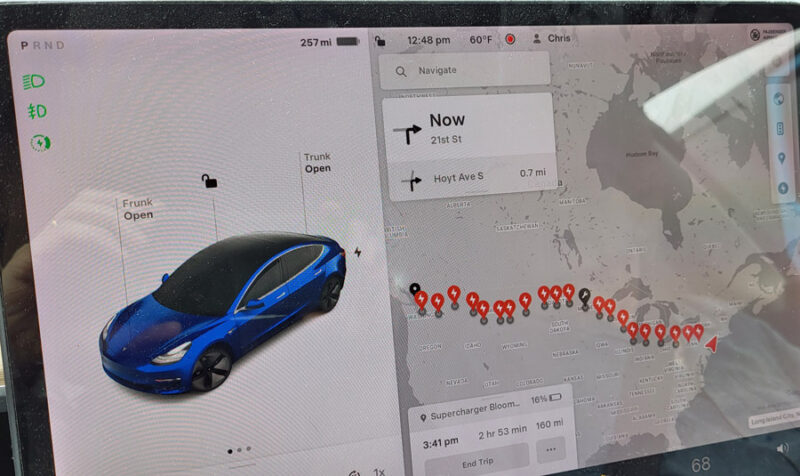
We made a mandatory stop at Duff’s Famous Wings in Buffalo to enjoy what may be the world’s best Buffalo Wings (their fries ain’t bad either). Conveniently there was a Tesla Supercharger right in the lot with the Duff’s. We made it out of New York that evening, through the tip of Pennsylvania and finally into Ohio on the first night. We spent the night in Ashtabula, Ohio, not far from one of the Kent State University campuses.
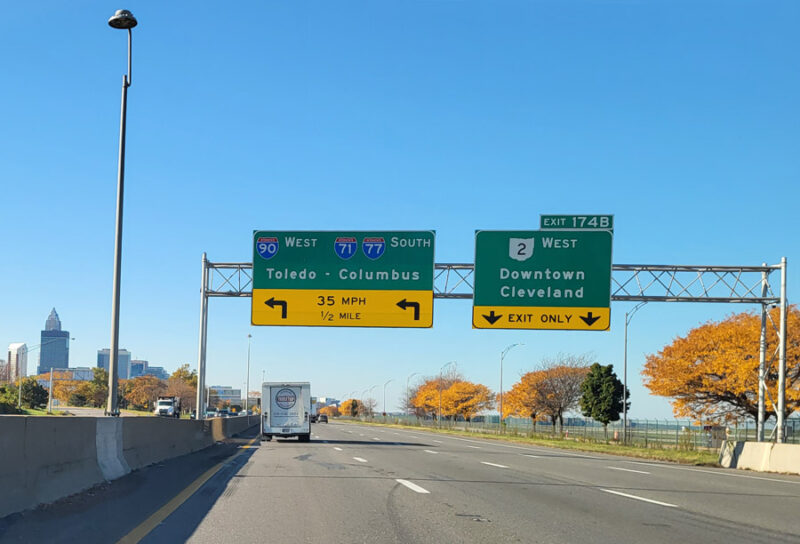
Watch that Temperature
We hit the road west the next morning and made it over the border into Indiana, through that state, into Illinois, past Chicago, and on into the heart of the Midwest. As the day progressed, a cold front descended upon us and the car’s range began to be impacted. Just like the batteries in your phone, the lithium-ion batteries in a Tesla are impacted by cold weather with reduced range, particularly at 70-75 MPH cruising speeds. Temperatures got as low as 18 degrees Fahrenheit (-8 degrees Celsius) and a windy snowstorm started to pick up, decreasing range even further.
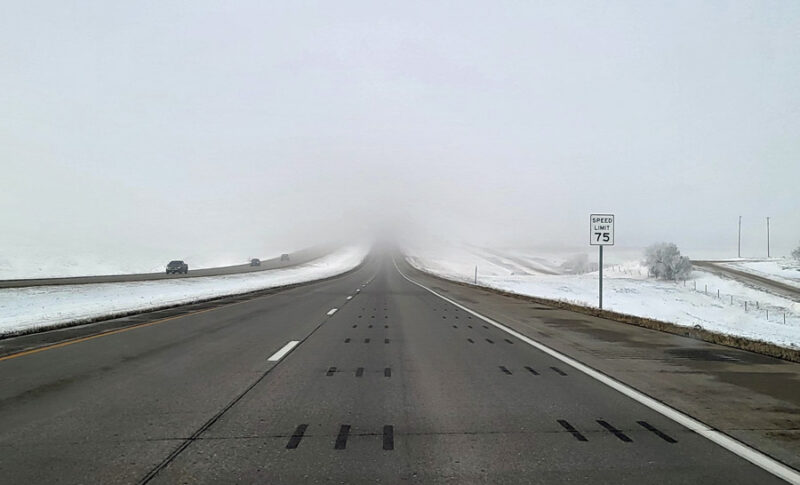
I will admit that I have pushed my Model 3 to its charge limit before (with 0 miles left on the range indicator… sometimes even less), but this time I pushed it a bit too far. Initially the Tesla NAV estimated that I would have about 8% charge left when arriving at the Supercharger in South Barrington, Illinois. But when I pulled off the highway, the car slowed to a max speed of about 40 miles an hour and I suspected I may be in trouble. The car’s range indicator still said I had about 4 miles of range left, so I didn’t fret too much.
The Supercharger was close, but it was located in the parking lot of a huge shopping mall. And thanks to the Tesla’s current navigation behavior, the detailed zoomed-in Navigation screen, which normally leads you right to the Supercharger, disappeared just before I actually arrived at the Supercharger. The Nav screen zoomed back out with no indication of the exact location of the charging station. Normally, with Superchargers located in an obvious location in a rest area, hotel parking lot or gas station, this isn’t too problematic. But in this case, I had to drive around the mall lot maze playing everyone’s favorite game, “Spot the Supercharger.”
When I finally spotted the superchargers, the car instructed me, in no uncertain terms, to pull over. With 3 miles left on the range screen, the battery was done. Around 50 yards from those tantalizing glowing red and white charging stalls the car came to a halt and could not be coaxed back into drive.

I considered pushing the car the last 50 yards, but when the high voltage battery is spent, the car can’t be shifted into Neutral. You can however, put the car in its “Tow mode” or “Transport mode.” You engage this in the car’s menu: Controls > Service > Towing. In Tow mode, the car disengages the automatic parking brake and allows the car to be rolled at low speed with only minor resistance. But I didn’t relish pushing the car 150 feet in a snow storm. Nor did it seem like the best idea to ask my mom to help. I did eye Mollie (the black lab) momentarily, but realized we had left her yoke back on the farm (kidding, we don’t use dogs for tilling fields — that’s what kids are for).
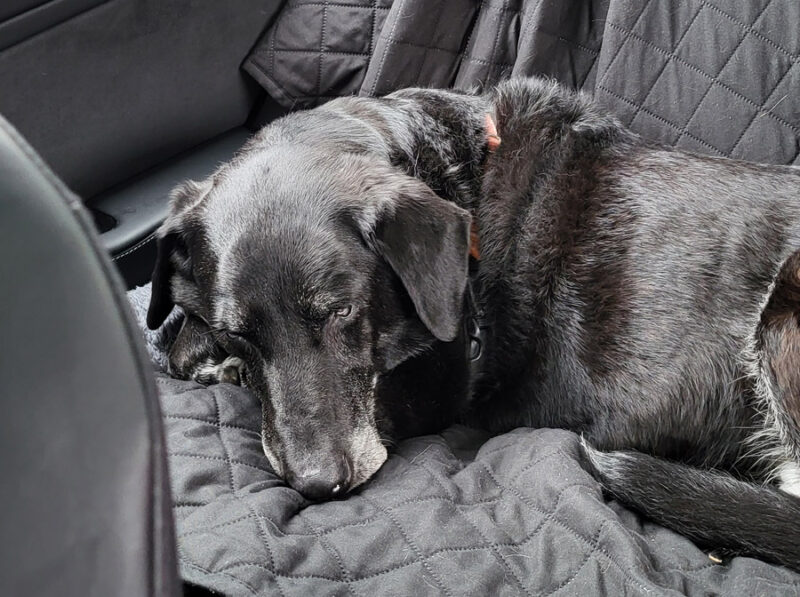
I called AAA (American Automobile Association), my road service provider, to request a tow. After being placed on hold and transferred multiple times, it became clear that they would not be able to send a tow truck to my rescue any time soon. Fortunately I remembered I had a 100-foot extension cord in the trunk. I asked the manager at one of the nearby stores in the mall if I could plug into her power outlet for a few minutes. Happily she obliged. So I plugged in the extension cord, ran it across the lot to my car, plugged in my Tesla Mobile Connector and found that it was about 18 inches short of my charging port. Not to worry, I put the car into Tow mode and pushed it forward about 2 feet. Success! My car started charging normally (albeit slowly).
I gave it about 15 minutes of level 1 charging (120V), then disconnected the mobile charger and tested to see if I could get the car into gear. The car complied and I was able to drive it over to the Supercharger where it was quite eager to start sucking up electrons at 250 kW. Crisis averted. But if I hadn’t had that extension cord, things might have gone differently.
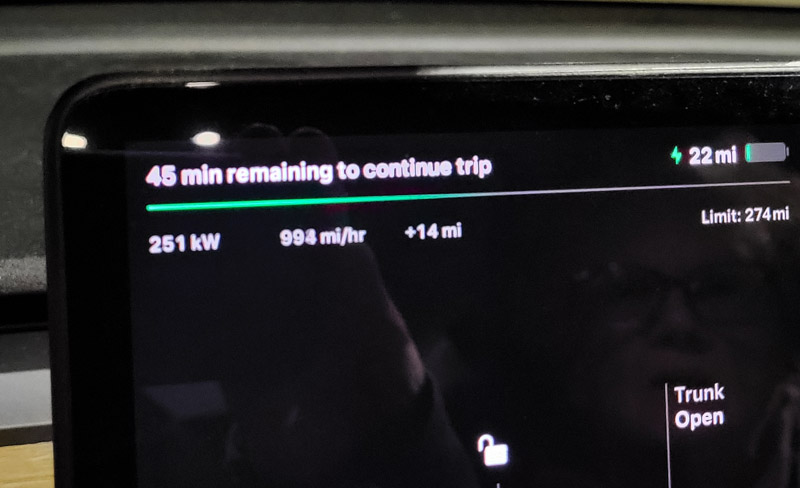
It was still pretty early in the evening when we finished charging in Illinois so we hit the road again, stopping once more to charge and then staying the night in Mauston, Wisconsin. The next day, we continued our journey stopping at a few Superchargers including ones in Menomonie, Wisconsin, and another in Fergus Falls, Minnesota. These were both 3rd generation Level 3 high speed chargers with a maximum charging rate of 250 kW or “1,000 miles an hour.” The charging rate slows as your battery’s state of charge rises, so I usually wouldn’t charge all the way up to 100% but would stop at about 90% charge so I’d have some wiggle room in case of persistent cold temperatures or harsh weather.
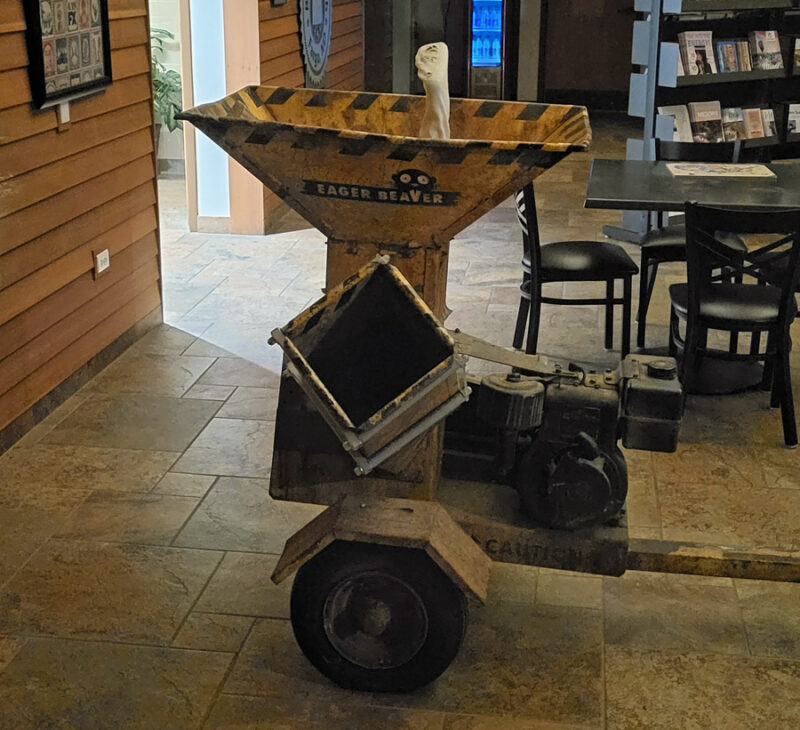
We stopped in Fargo, North Dakota, to check out the famous woodchipper from the movie “Fargo,” and then continued our journey, stopping for the night in Bismarck, ND. When parking the car overnight in cold weather, I always made sure to leave a little extra range on the battery, even if I was staying in a hotel close to a Supercharger. In cold weather, EVs can lose a bit of battery charge overnight, particularly if you leave Tesla’s sentry mode active. Sentry Mode uses the car’s built in cameras to keep an eye on your car when it’s parked, making sure no one breaks in and capturing video footage if anyone gets too close. It’s a great security feature, but it does use a bit of power, so keep that in mind when traveling.
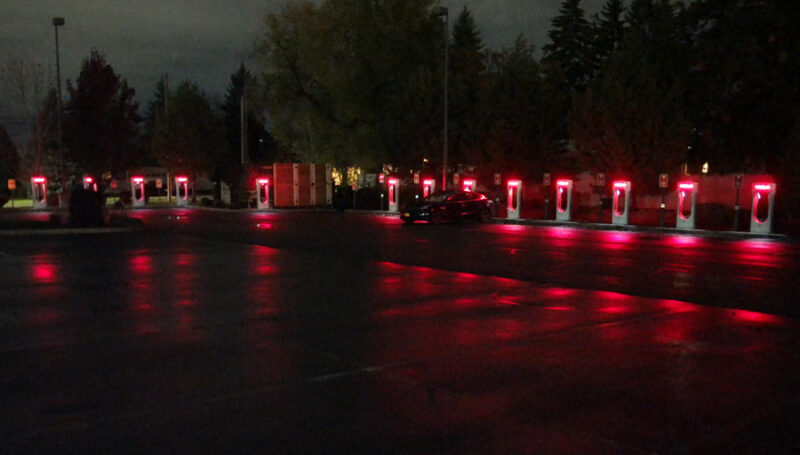
North Dakota blurred into Montana; Montana blended into Idaho; Idaho disappeared into Washington. And then after a little over four and a half days, 2900 miles, 21 stops for Supercharging and four nights in pet-friendly motels, we arrived in Seattle just in time for dinner. My niece in Seattle left her driveway open for me with a nice Tesla charging cable ready for me to plug in.

Instead of arriving as a stressed out ball of nerves (my usual condition after long drives in a gas-mobile), I arrived relaxed, if a bit tired. Using Full-Self Driving for most of the journey took the stress out of the drive. Knowing there is another set of eyes on the road (actually eight cameras and an advanced AI) instills confidence and takes the edge off driving those tedious stretches of endless white dotted lines. And stopping to charge every three hours or so allowed me to stretch my legs, use the restroom, grab a snack, take a nap, or ponder life’s mysteries.
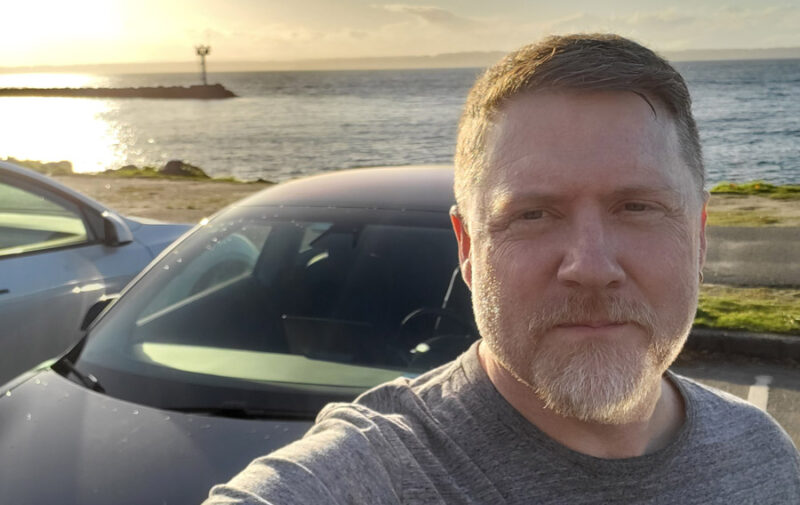
Whilst pondering said mysteries, I arrived at a few conclusions about my road trip.
Always Leave a Buffer
It’s probably best to leave a larger margin of error when driving long distance in an EV in cold weather. Instead of picking the supercharger that you can reach with 5% or 10% charge remaining, pick a closer one. Driving along major highways from coast to coast, Superchargers were common enough that I had several to choose from along the way. A simple voice command “show superchargers” will show all of the Tesla superchargers near your current location on your map. Click on one that’s on your route and the Tesla navigation will lead you there. It will also precondition the battery to its ideal charging temperature when you arrive at the charger to assure fast efficient charging.
AAA Ain’t all it’s Cracked Up to Be
AAA told me it would be over two hours before a truck would be dispatched to my location in Illinois. A long delay in sending a tow truck in cold winter weather could mean the difference between getting to your Supercharger with the 12V battery still viable and your car ready to charge or getting there with a dead 12V battery and no way to charge the car. Also, if your 12V battery dies, you won’t even be able to get the car into Tow mode to be transported onto a flatbed. If that happens to you, make sure the tow driver uses a 12V battery booster to wake up the car and get it into Transport mode. Check out a few more Tesla winter driving and charging tips.
AAA should offer a service to EV owners where they send a truck with a portable charging unit that will recharge the car enough to get the driver on their way. If the car is within a few miles of a charging station, this is the easiest way to get the driver and their passengers back on the road. A simple 240V level 2 charger would get the car 10-12 miles of range back in 20 minutes, which is less time than it would take to tow the car to a charger. Tesla Roadside Assistance does offer such a service in select locations, but for a fee. While a tow due to a warranty-related issue or a flat tire is usually covered under Tesla’s warranty, a service call for a spent high voltage battery is not covered under the warranty.
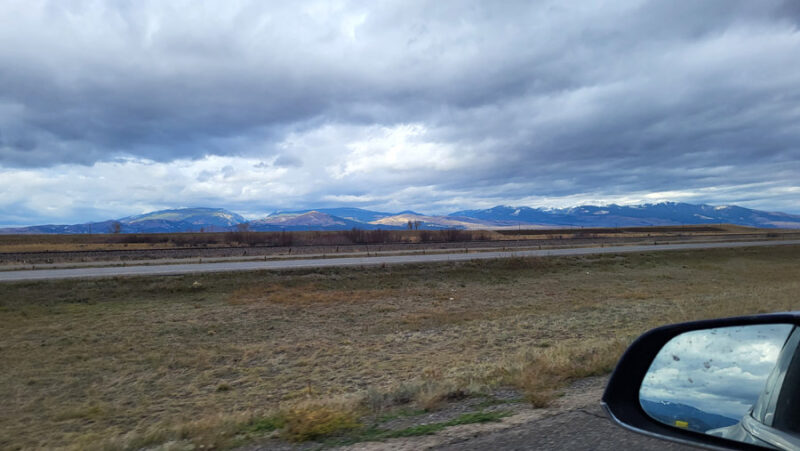
Always Bring Your Mobile Charger With You on Trips
Tesla’s Mobile Connector, or any comparable level 1/level 2 portable charging device may save your bacon on a road trip (like it did mine). Even if you plan to use Superchargers for your entire trip, having the option to plug into any standard 120V outlet or a 240V campground hookup gives you more flexibility, and more peace of mind when you’re out on the road, far from home. While you’re at it, keep a long extension cord in your trunk or frunk to extend your charging options even further. Having a mobile charger and extension cord in your car is like keeping an empty gas can in the trunk of a gas car. You may never need it, but when you do, you’ll be happy it’s there.
On the Road Again
After a few days visiting family and friends in Washington, I hit the road again for the return trip back to New York. This trip was less eventful with no charging drama or unforeseen issues along the way. I completed the return trip from Tacoma to New York City in about three and a half days. I even stopped to see a few sights along the way.
For the total trip, my average energy usage was about 326 Wh/mile over 6,000 miles. This would have been better (lower) during warmer weather, but it’s still good enough to get you from charger to charger on a road trip. The return trip was 313 Wh/mile as temperatures were slightly warmer on the way back. Also my average cruising speed was generally around 70-75 MPH as the speed limits out west are up to 80 MPH in many places. Driving slower would also have improved my efficiency (but extended the travel time).
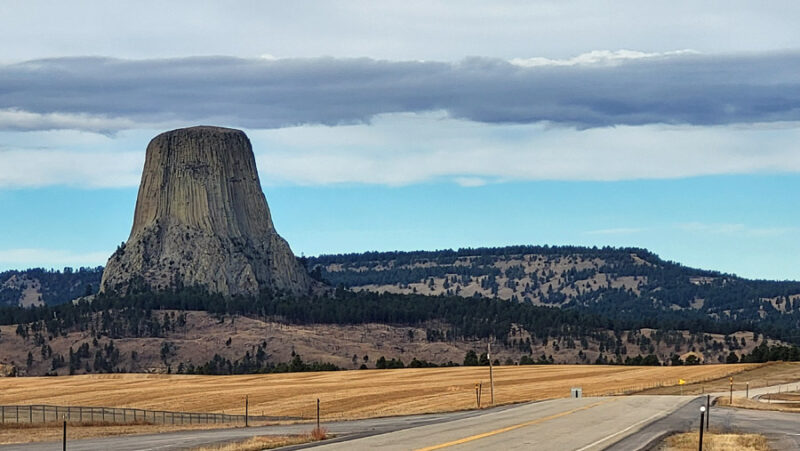
One thing that stood out to me on the trip was just how sparsely used the Superchargers were in many locations. On multiple charging stops, I had the entire Supercharger station — sometimes up to 15 charging stalls or more — to myself. EV critics like to complain about “insufficient infrastructure” for long distance trips in EVs, but that was not my experience on this trip or others in a Tesla. Other than that little charging glitch in Illinois, the Navigation system took me to each charging stop with plenty of power to spare. And I never had to drive more than a couple of miles off the highway in order to reach a Supercharger. Long distance driving in an EV that is not a Tesla may be a bit more challenging, but this too will improve over time as more EV makers adopt the Tesla NACS charging standard and the Supercharger and third party high speed charging networks are built out even more in the coming months and years.
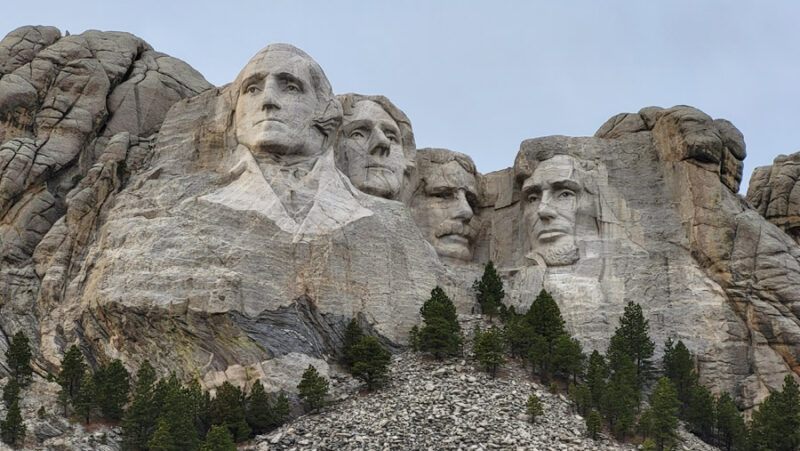
On the return trip, I stopped at 23 Superchargers and made it 3,091 miles from Tacoma, Washington, back to New York City in about 3.5 days. I ate way too much fast food and ingested way too much caffeine, but the trip was a success overall. My mom and her pup made it safely to Washington and I made it home unscathed with sights seen and stories to tell. The whole trip from coast to coast and back cost less than $1,000 including food, drink, and lodging. Again, free Supercharging thanks to the referral program was a key factor in the decision to drive. Now I’m looking for a reason to do it all over again.
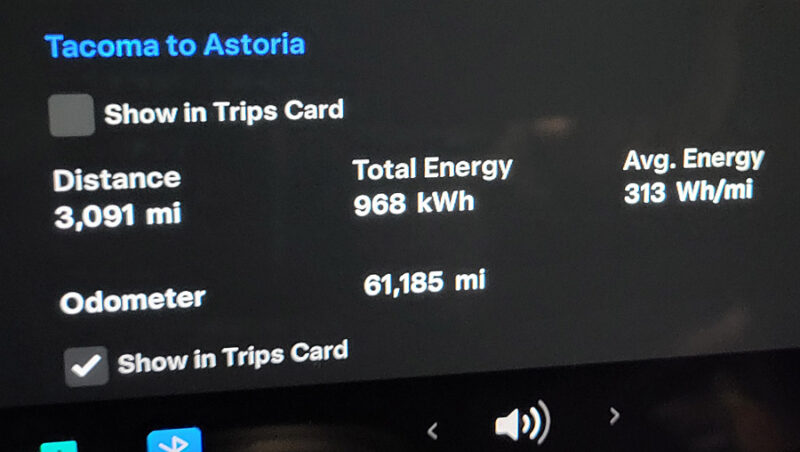
Have you done your own long distance road trip in an EV? Let us know about it in the comments.
Related Reading:
Have a tip for CleanTechnica? Want to advertise? Want to suggest a guest for our CleanTech Talk podcast? Contact us here.
Latest CleanTechnica TV Video
I don’t like paywalls. You don’t like paywalls. Who likes paywalls? Here at CleanTechnica, we implemented a limited paywall for a while, but it always felt wrong — and it was always tough to decide what we should put behind there. In theory, your most exclusive and best content goes behind a paywall. But then fewer people read it!! So, we’ve decided to completely nix paywalls here at CleanTechnica. But…
Thank you!
CleanTechnica uses affiliate links. See our policy here.


